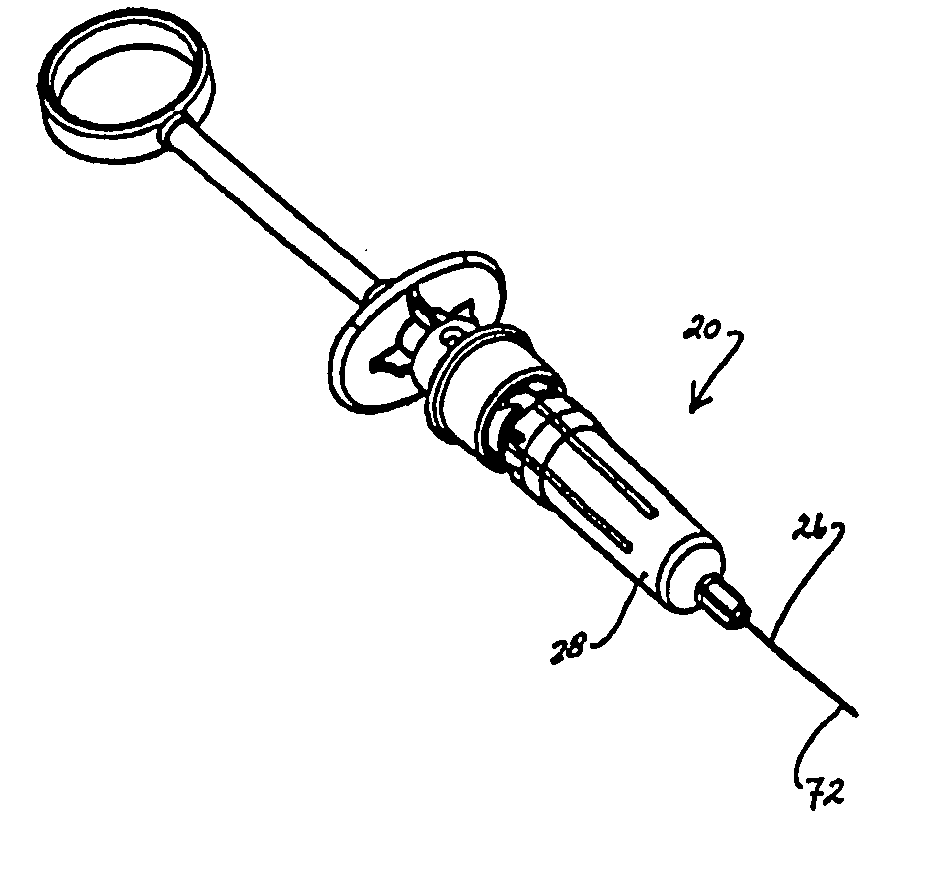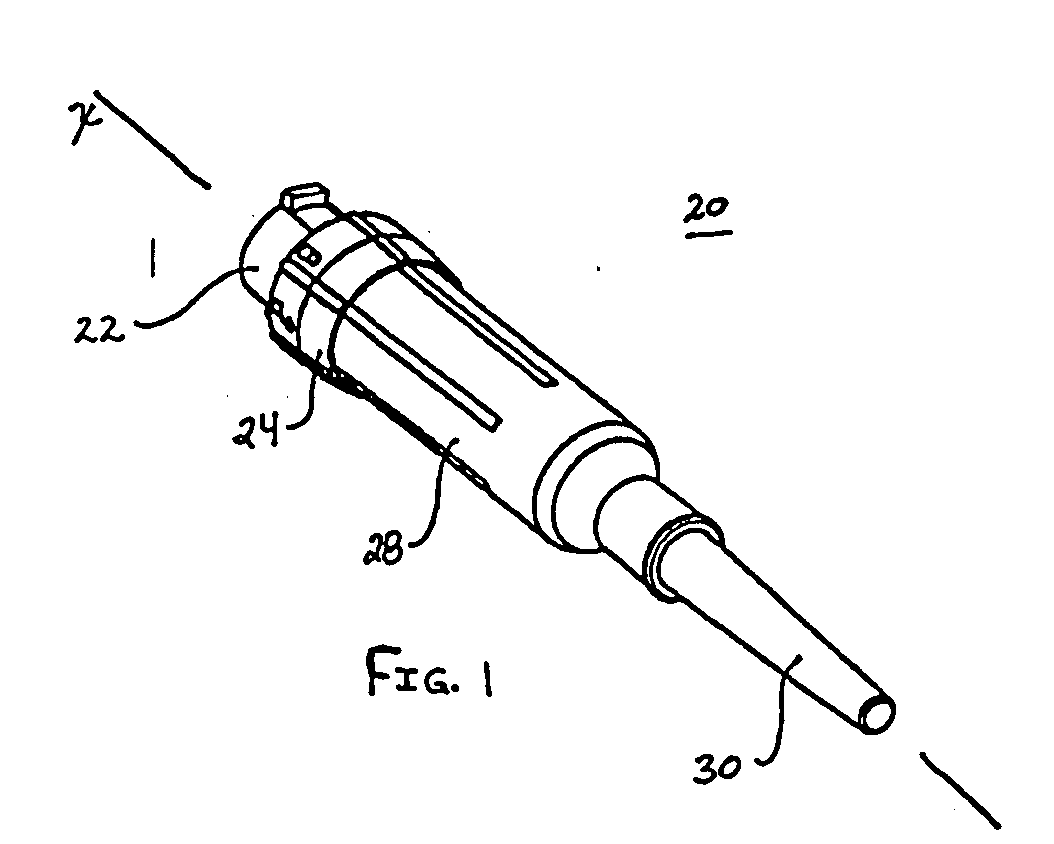Safety needle apparatus
a needle and safety technology, applied in the field of safety shields, can solve the problems of inconvenient needle use, high risk of blood-borne pathogens from infected patients, and high risk of needle exposure by professionals
- Summary
- Abstract
- Description
- Claims
- Application Information
AI Technical Summary
Benefits of technology
Problems solved by technology
Method used
Image
Examples
Embodiment Construction
[0051] The exemplary embodiments of the safety needle apparatus and methods of operation disclosed are discussed in terms of medical needle assemblies for the administration of fluids, and more particularly, in terms of a dental safety needle apparatus that is easily employed to prevent hazardous exposure to a needle during use, transport and upon completion of a procedure to facilitate disposal thereof. It is contemplated that the needle may be shielded during use including storage, transport, fluid infusion and / or collection, subsequent thereto, etc. It is envisioned that the present disclosure, however, finds application to a wide variety of cannula needles and devices for the infusion of preventive medications, medicaments, therapeutics, etc. as well as injections employed during procedures relating to phlebotomy, orthopedic, digestive, intestinal, urinary, veterinary types, etc., to a subject. It is also envisioned that the present disclosure may be employed for collection of b...
PUM
 Login to View More
Login to View More Abstract
Description
Claims
Application Information
 Login to View More
Login to View More - R&D
- Intellectual Property
- Life Sciences
- Materials
- Tech Scout
- Unparalleled Data Quality
- Higher Quality Content
- 60% Fewer Hallucinations
Browse by: Latest US Patents, China's latest patents, Technical Efficacy Thesaurus, Application Domain, Technology Topic, Popular Technical Reports.
© 2025 PatSnap. All rights reserved.Legal|Privacy policy|Modern Slavery Act Transparency Statement|Sitemap|About US| Contact US: help@patsnap.com



